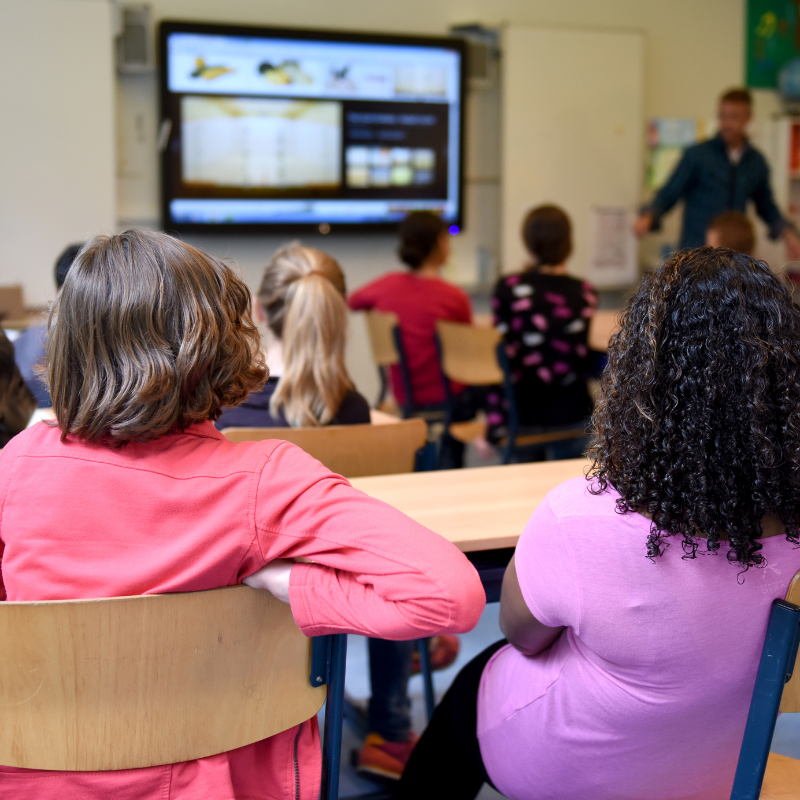The Rise of AI in Classrooms – How Smart Tools Are Changing the Way We Learn
Not long ago, the idea of having a “digital assistant” in a classroom sounded like science fiction. Today, it’s a reality — and it’s reshaping education faster than we ever imagined. Artificial Intelligence (AI) isn’t just another tech buzzword; it’s becoming a fundamental tool in schools, colleges, and even home learning environments. From personalized learning paths to real-time feedback, AI is quietly changing the way we teach and learn — and it’s only getting started.

The Shift from Traditional to Tech-Driven Learning
For decades, the classroom model was simple — one teacher, one lesson plan, and dozens of students expected to learn at the same pace. The problem? Every student is different. Some pick up concepts quickly, others need more time. AI has stepped in to address that gap.
Today’s AI-driven platforms can assess a student’s strengths, weaknesses, and learning style in real time. Imagine a math app that notices you struggle with fractions and instantly adjusts lessons to give you extra practice — all without the teacher needing to rewrite the plan. This level of customization was impossible in traditional classrooms, but with AI, it’s becoming the norm.
Personalized Learning – The Core Advantage
One of the most exciting applications of AI in education is personalized learning. AI tools like adaptive quizzes, virtual tutors, and smart content recommenders can:
- Adjust the difficulty of tasks to match the student’s level
- Suggest extra resources for areas where the student struggles
- Provide instant feedback, so mistakes are corrected immediately
This isn’t about replacing teachers — it’s about giving them superpowers. Teachers can spend less time grading and more time mentoring, encouraging creativity, and focusing on real-world skills.
AI-Powered Language Learning
Language learning has seen a massive boost thanks to AI. Platforms like Duolingo and Google Translate are powered by machine learning, which means they get smarter the more you use them. These tools can detect pronunciation errors, adapt exercises based on your performance, and even simulate real conversations. In a world that’s more connected than ever, multilingual skills are becoming essential, and AI is making them easier to acquire.
Reducing the Administrative Load
It’s not just students who benefit from AI — teachers do too. Administrative work is one of the biggest drains on a teacher’s time. AI can automate:
- Grading multiple-choice tests
- Managing attendance records
- Preparing customized lesson materials
This frees up educators to focus on higher-value teaching tasks rather than paperwork.
AI and the Future of Assessments
Traditional exams often fail to measure real understanding. They’re stressful, rigid, and sometimes unfair to students who don’t perform well under pressure. AI-based assessment tools are changing that by evaluating learning progress continuously, not just during final exams. This allows for a more accurate picture of a student’s skills and reduces the pressure of one big test.
Challenges We Can’t Ignore
Of course, AI in education isn’t perfect. There are concerns about:
- Data privacy: AI tools collect a lot of student data, which must be protected.
- Over-reliance on technology: Students still need human interaction and mentorship.
- Access inequality: Not all schools have the resources to adopt AI tools.
Balancing technology with human connection is going to be the key challenge moving forward.
What the Future Holds – Education in 2025 and Beyond
By 2025, AI integration in education will be more seamless. We might see:
- AI-powered career guidance tools recommending subjects based on students’ strengths
- Virtual reality classrooms for immersive, hands-on learning experiences
- Real-time translation tools breaking down language barriers in global classrooms
The goal isn’t to create “robot teachers” but to build a hybrid environment where human educators and AI tools work together for better results.
Final Thoughts
AI in education isn’t a passing trend — it’s a revolution. The best part? It’s making learning more personal, more efficient, and more accessible than ever. For students, that means less time feeling lost and more time feeling confident. For teachers, it means fewer hours buried in paperwork and more time doing what they do best — inspiring the next generation.
If the last decade was about bringing computers into classrooms, the next will be about making those computers smart enough to truly understand each student. And that’s a future worth looking forward to.
